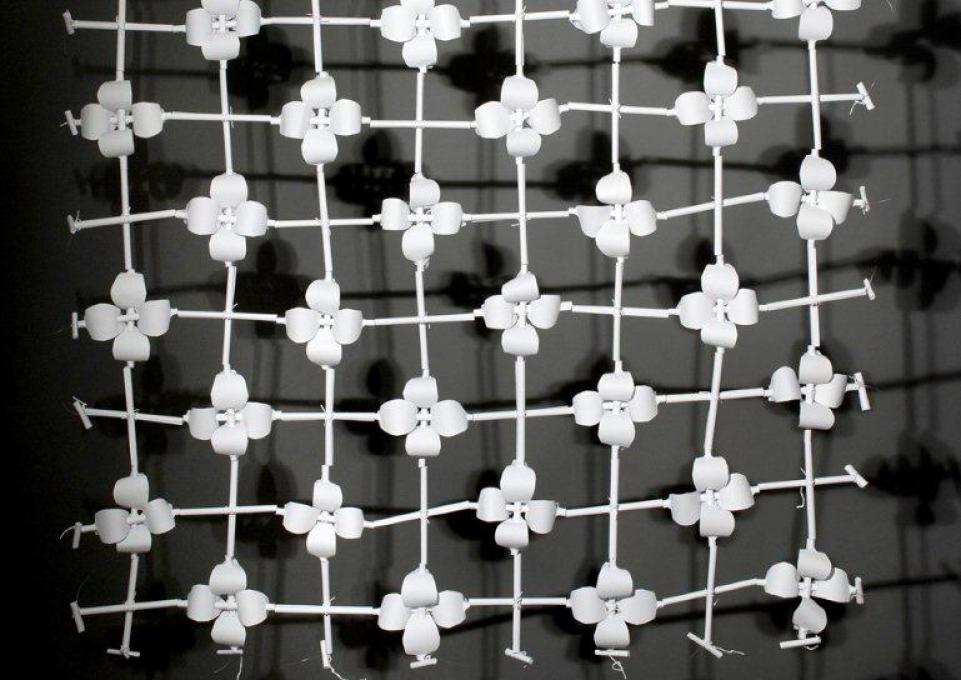
The Czurles-Nelson Gallery is currently filled with white copy paper, old playing cards, and discarded boxes. But you’d never know it at first glance. What you see are intricate chains flowing from the ceiling, manikins adorned with funky outfits, and walls of delicate flowers and cranes, among other designs, in the whimsical student exhibit, Elaborate Paper.
The exhibit, which runs through October 26, resulted from collaboration among 18 students in the Interior Design Department and the fibers program under the instruction of associate professors Jörg Schnier and Jozef Bajus. This is the third time the instructors have teamed up.
"It's fascinating to see two diverse groups of students working on the same assignment and coming up with such different solutions and outcomes," Bajus said. "We challenge the students with many material samples, small models, and prototypes, which are necessary learning experiences before they start working on the final projects."
For the first half of the semester, the students transformed plain copy paper and other paper materials into a plethora of designs (no taping, staples, or other connective tools allowed) and "wearable sculptures."
"Students learned what you can do with paper and what you absolutely cannot do," Schnier said.
The pieces are so intertwined throughout the exhibit that Schnier said it's hard to tell which were made by fibers students and which were made by interior design students. A pair of students from each discipline worked together on the bigger pieces.
"This provides an interdisciplinary work environment and experience for the students," Schnier said, adding that arranging the exhibit throughout the gallery provided an additional learning experience. "They had to do the lighting, set up the pedestals, and hang all the pieces."
Bajus described the space at the beginning of an exhibition as, "Like an empty canvas in front of the painter."
“It’s one thing to create projects in the studio, but to install those projects in a real gallery space, where every piece should be in the right place, is something completely different,” Bajus said. "It was significant to us to have a cohesive look for the show by finding a good balance and creating an immediate dialogue between the selected projects on display."
Schnier and Bajus encouraged students to look for free and/or previously used paper, not only to be more environmentally conscious but also to get students into the mode of finding raw materials on their own and talking to people.
"These are good job-hunting skills," Schnier said.
